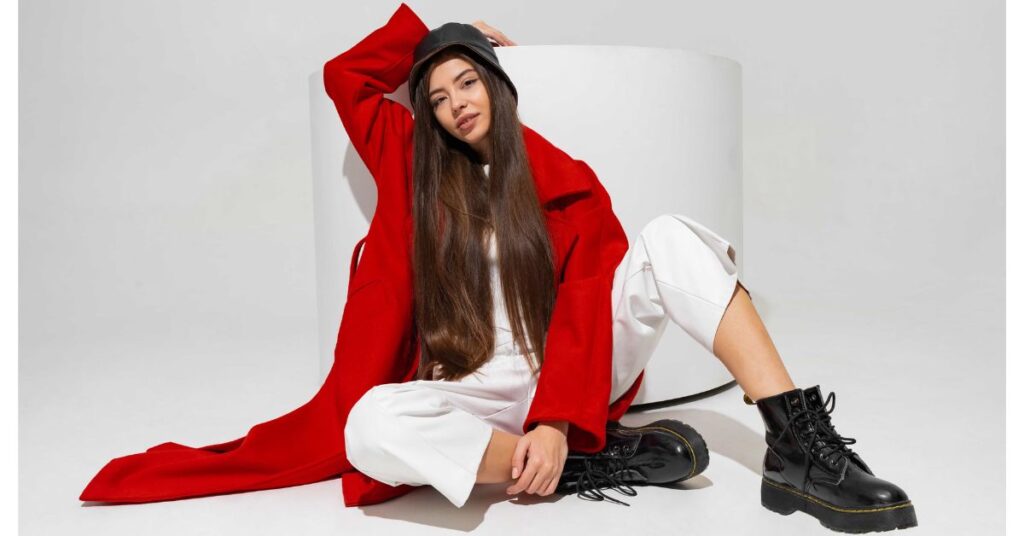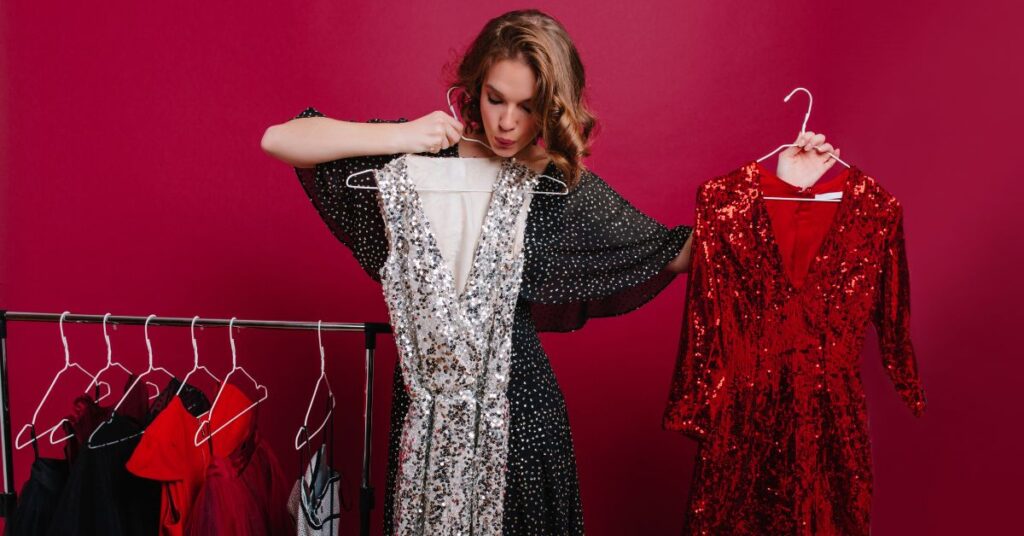Hey style enthusiasts and trendsetters! Welcome to a journey where creativity meets commerce, and where threads weave stories beyond fabric. Today, we’re diving deep into the captivating world of “Fashion Branding” – a realm where logos become legends, and labels transcend mere tags.
Picture this: the runway is not just a stage; it’s a canvas, and every stitch is a stroke of imagination. Join me as we unravel the secrets behind those iconic logos and explore the fascinating intersection of art, identity, and commerce that shapes the very essence of fashion branding.
Get ready to embark on a stylish expedition where we’ll demystify the enchanting process of turning garments into cultural statements. So, grab your metaphorical front-row seat, and let’s delve into the artistry and strategy that make fashion branding an alluring dance between aesthetics and business. It’s time to decode the language of style!
What is Fashion Branding and Marketing?
Imagine you’re throwing a party, and fashion is your VIP guest. Now, fashion branding is like giving that VIP guest a cool, memorable name tag and making sure everyone knows how awesome they are. It’s about creating a unique personality and style for a clothing or accessory brand, kind of like giving it its own special flair.
Now, let’s talk about marketing. Think of marketing as the invitations to your fashion party. You want people to know about your stylish VIP guest and why they should be excited to hang out with it. Marketing is all the fun and creative ways you spread the word – from social media posts to flashy ads, and even those eye-catching displays in stores.
Fashion branding and marketing work hand in hand to make sure everyone wants to be at your fashion party. So, it’s like giving your VIP guest a snazzy name and then shouting from the rooftops why everyone should come and join the stylish celebration!
Why is Fashion Brand Important?
Fashion brands are important for several reasons, and it goes beyond just clothes and accessories. Here’s why they matter:
- Identity and Expression: Fashion brands help individuals express their identity. People often choose brands that align with their personality, values, and lifestyle. It’s a way of telling the world who you are without saying a word.
- Quality and Consistency: Brands establish a reputation for quality. When you see a familiar logo, you may associate it with certain standards. A good fashion brand maintains consistency in the quality of materials, craftsmanship, and design, building trust with customers.
- Trendsetting and Innovation: Fashion brands often lead trends and drive innovation. They set the tone for what’s in style and introduce new ideas, pushing the boundaries of design and creativity in the industry.
- Status and Aspiration: Some fashion brands carry a sense of status and exclusivity. Wearing a particular brand may symbolize success, luxury, or a certain lifestyle. For many, owning a piece from a prestigious brand is aspirational.
- Marketing and Storytelling: Brands tell stories. They create narratives around their products, weaving a tale that connects with consumers emotionally. This storytelling aspect helps build a relationship between the brand and its audience.
- Community and Belonging: Fashion brands create communities of like-minded individuals. Whether through social media or in-store events, brands foster a sense of belonging among their customers, creating a shared experience around their products.
- Consumer Loyalty: Building a strong fashion brand can lead to customer loyalty. When people identify with a brand and have positive experiences, they are more likely to remain loyal customers, returning for future purchases.
- Market Differentiation: In a crowded market, brands differentiate themselves. They offer a unique style, message, or approach that sets them apart from competitors. This distinctiveness helps consumers make choices based on personal preferences.
13 Tips for Building a Strong Fashion Brand
Building a strong fashion brand requires a combination of creativity, consistency, and understanding your audience. Here are some tips to help you establish and strengthen your fashion brand:
- Define Your Brand Identity:
Clearly articulate what your brand stands for, its values, and its unique selling proposition (USP). What makes your brand special?
- Know Your Target Audience:
Understand your target market. Know their preferences, lifestyle, and what influences their buying decisions, including their sentiments towards cringe fashion. Tailor your brand message and products to resonate with them, ensuring that your offerings align with their tastes and values.
- Create a Memorable Logo and Visuals:
Design a distinctive and memorable logo that reflects your brand identity. Consistent and visually appealing branding across all platforms helps build brand recognition.
- Quality Matters:
Ensure the quality of your products. A strong brand is built on trust, and delivering high-quality items will help build and maintain that trust with your customers.
- Tell Your Story:
Share the story behind your brand. What inspired its creation? What values does it embody? Storytelling creates an emotional connection with consumers.
- Consistent Branding Across Platforms:
Maintain a consistent brand image across all platforms – from your website and social media to packaging and in-store displays. Consistency builds credibility.
- Engage with Your Audience:
Actively engage with your audience on social media. Respond to comments, ask for feedback, and involve your customers in the brand experience. Social media is a powerful tool for building a community around your brand.
- Collaborate and Partner:
Collaborate with influencers, other brands, or artists whose values align with yours. Partnerships can introduce your brand to new audiences and add credibility.
- Offer Excellent Customer Service:
Exceptional customer service contributes to positive brand perception. Respond promptly to inquiries, address concerns, and make the customer experience as smooth as possible.
- Limited Editions and Exclusivity:
Create a sense of exclusivity by offering limited-edition items or exclusive collections. This can generate excitement and a feeling of urgency among your audience.
- Stay on Top of Trends:
Keep an eye on industry trends while staying true to your brand identity. Innovate and adapt to changing tastes, but maintain a core essence that defines your brand.
- Sustainability and Social Responsibility:
Embrace sustainability and social responsibility. Many consumers appreciate brands that contribute positively to the environment and society.
- Participate in Fashion Events:
Attend or participate in fashion shows, trade fairs, and other industry events to stay updated on the latest fashion trend. This can help your brand gain exposure and network within the fashion community, ensuring that you are in tune with the dynamic landscape of the industry.
Case Studies: Successful Fashion Branding Campaigns
Fashion branding campaigns serve as powerful narratives that breathe life into brands, turning them into cultural icons. Two standout examples are Nike, the embodiment of athletic determination, and Chanel, synonymous with timeless elegance. In examining their respective journeys, we explore how these fashion giants strategically crafted and evolved their brand identities, fostering connections with consumers across generations. From Nike’s iconic swoosh inspiring athletes globally to Chanel’s ability to seamlessly blend tradition with modern trends, these case studies offer valuable insights into the art and science of successful fashion branding campaigns.
A. Nike: Swoosh and Beyond
Nike’s journey began in the 1960s as Blue Ribbon Sports, eventually transforming into Nike in 1971. The iconic swoosh logo was introduced in 1971 for a mere $35. Over the years, Nike evolved from a running shoe company to a global athletic powerhouse. The brand focused on innovation, introducing game-changing technologies like Air cushioning. Nike’s commitment to performance, coupled with its edgy marketing, positioned it as a symbol of athletic excellence and determination.
Nike’s branding success is epitomized by its groundbreaking campaigns. The “Just Do It” slogan, introduced in 1988, became a motivational mantra globally. The campaign associated the brand with athletes and their relentless pursuit of success. Nike’s collaborations with sports legends like Michael Jordan and cultural icons like Kanye West further expanded its reach beyond sports. These collaborations not only boosted sales but also solidified Nike’s position as a cultural influencer, transcending the boundaries of sports.
B. Chanel: Timeless Elegance
Chanel, founded by Coco Chanel in 1910, has maintained a reputation for timeless elegance. The brand’s commitment to quality craftsmanship and iconic pieces like the Little Black Dress and Chanel No. 5 perfume contribute to its classic image. Chanel’s double-C logo, introduced in the 1920s, has become synonymous with sophistication. The brand’s focus on exclusivity and limited product releases reinforces its luxury status.
Despite its classical roots, Chanel has adeptly embraced modern trends. In recent years, the brand has successfully navigated the digital landscape, engaging with younger audiences through social media. Chanel’s creative director, Karl Lagerfeld, brought a modern touch to its runway shows, blending tradition with contemporary aesthetics. Collaborations with influencers and celebrities, such as Kristen Stewart and Pharrell Williams, showcase Chanel’s ability to stay relevant in a rapidly changing fashion landscape while preserving its timeless allure.
Conclusion
In the vibrant world of fashion branding, it’s not just about clothes; it’s about telling compelling stories. From Nike’s motivational swoosh to Chanel’s timeless elegance, these brands showcase the magic of connecting with people on a deeper level. Fashion branding is an art that goes beyond trends – it’s about creating identities, sparking emotions, and leaving an indelible mark on the fabric of culture. So, whether you’re rocking a pair of sneakers or draped in haute couture, share your thoughts! What’s your favorite fashion brand and why? Drop a comment below and let’s keep the stylish conversation going.
Also, Read- Dressing Disasters: The 10 Worst Fashion Trends in Recent Memory
– Dive into The Hottest Fads in Fashion: A Trendy Exploration


